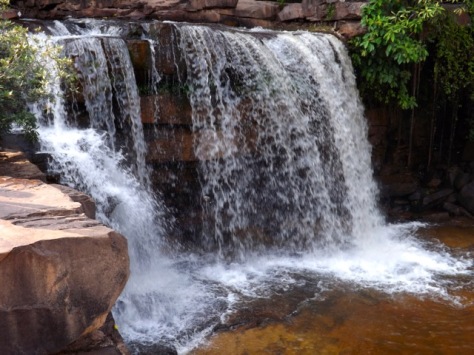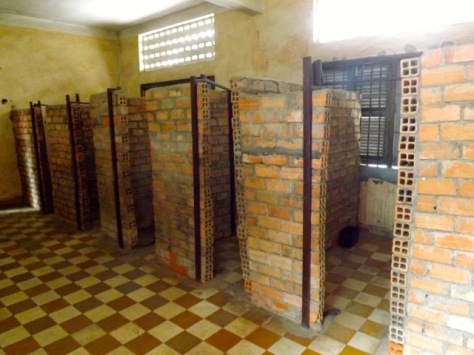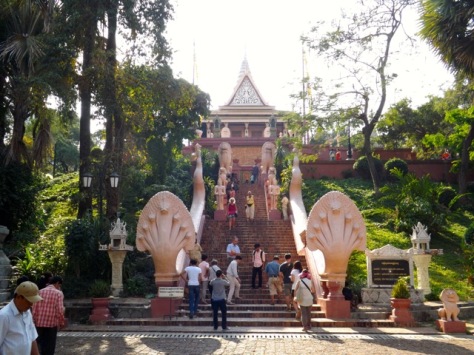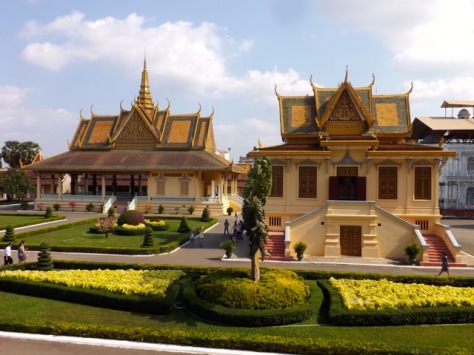I’ve recently ridden the length of Vietnam on a Scooter.
Incase you missed them:
Hanoi to Ho Chi Minh City by Scooter – Part 1
Hanoi to Ho Chi Minh City by Scooter – Part 2
Hanoi to Ho Chi Minh City by Scooter – Part 3

Day 18 – Nha Trang to Da Lat – 139km
Da Lat is in the southern highlands and is my first foray from the coast since my rained out trip to Tham Duc. This time the weather was amazing, with cloudless blue skies. Nha Trang’s crazy traffic was something I was grateful to leave and as I rode away from AH1 I rejoiced in the lack of roadworks and trucks.

The road was one of the best so far as it slowly climbed into the mountains to a height of around 1500 metres. It got colder the higher I went and especially so when I was not in direct sunlight. I stopped for a break at an empty lot with a solitary tree that caught my inspiration.

Most days I only pass one or two other tourist riders. Today I counted somewhere around 35 tourist bikes, many with passengers. I expected Da Lat to be a small mountain town but instead found a city surrounded by vast valleys of greenhouses. But then, it is the flower capital of Vietnam. While the motorcycle traffic was crazy, the city has a beautiful lake at its centre, along with pink blooming cherry trees.

Day 19 – Da Lat Countryside Tour
For only the second time on this trip I booked a tour, desiring to be driven around for a change. Our first stop was a flower farm, busy because of Valentine’s day and Chinese New Year.

Then it was off to a coffee plantation where we got to try Weasel Coffee. Weasel coffee turned out to be the Luwak coffee I’d tried in Indonesia. Apparently the Vietnamese only have one word which means both Asian Palm Civet and Weasel. We then stopped at a silk processing factory, where they create silk thread from silkworm cocoons. It was here we ate roasted silk worm. Not something you do everyday, or probably want to ever do again…

We also visited the Hang Nga Guesthouse, also known as ‘the crazy house’. Built by a local architect the house has many walkways, some going over the rooftops or across the yards. The guesthouse is so popular that bookings are required months in advance. The owner has purchased several houses in the adjacent block and is in the process of adding them to the initial house.

Day 20 – Da Lat to Phan Thiet – 159km
Coming down from the highlands saw an interesting change in temperatures. The long windproof pants, shoes and socks, jumper and windproof jacket became too hot. As I got closer to Pan Thiet I had to pull over and take off the jumper, but was still hot.
On a side note, hotels in Vietnam can be fairly cheap. This is what US$8.90 gets you.

This includes cable TV, air con, double bed, ensuite bathroom, bar fridge and high-speed wireless internet. They aren’t luxury resorts and there’s no view, but you don’t really need these things when you’re either out exploring or sleeping.
Day 21 – Mui Ne Beach – 36km Round Trip
Eighteen kilometres from Phan Thiet is the popular tourist beach town of Mui Ne. Like Nha Trang, it’s very popular with Russian tourists, but while this seems to put some people off, I have no trouble with attractive Russian women. Exploring the area, I rode around several beautiful beaches (all unfortunately with their share of rubbish).

I also found another Cham tower ruin similar to the one in Nha Trang.

And I walked for a kilometre along the ankle-deep Fairy Springs. The red water leads through some very interesting formations in the white rock and orange sands.

Day 22 – Phan Thiet to Vung Tau – 167km
Today was so hot I wore shorts and a t-shirt instead of my full riding gear. The road followed Vietnam’s southern coast with plentiful beaches. Then, not far from my destination I had bike troubles again and I stopped to get it fixed. That brings my total bike issues to eight.
I liked Vung Tau and wished I could have stayed longer, but with an expiring Visa I was running out of time. Even with the bike troubles, I still had time to explore the peninsula, and found this statue of Christ on one of the clifftops, listed as the 8th most famous Christ statue in the world.

On a hill at the other end of the peninsula I found a large statue of St Mary beside the St Mary’s Church…

They like putting things on hills here, as there are ones with sitting buddhas, temples, towers and no doubt others. Then out on the water, there’s a temple out on a small island which includes a pair of bunkers from the war.

Day 23 – Vung Tau to Ho Chi Minh City – 116km
Today was to be a short day, but it just wasn’t to be. While the bike gave me little trouble, it was my replacement phone that sent me off along the wrong path before freezing until an hour later when I managed to find my own way to the main highway. From there it was fairly straight forward all the way to the hotel, passing what I call the Face of Saigon, an attraction at the Soui Tien Cultural Amusement Park.

While I’ve enjoyed this experience greatly, the problems with my bike have given me enough frustration that I’m glad it’s come to an end.

Next, I explore Ho Chi Minh City and make preparations to sell my scooter.
The Lone Trail Wanderer


























































